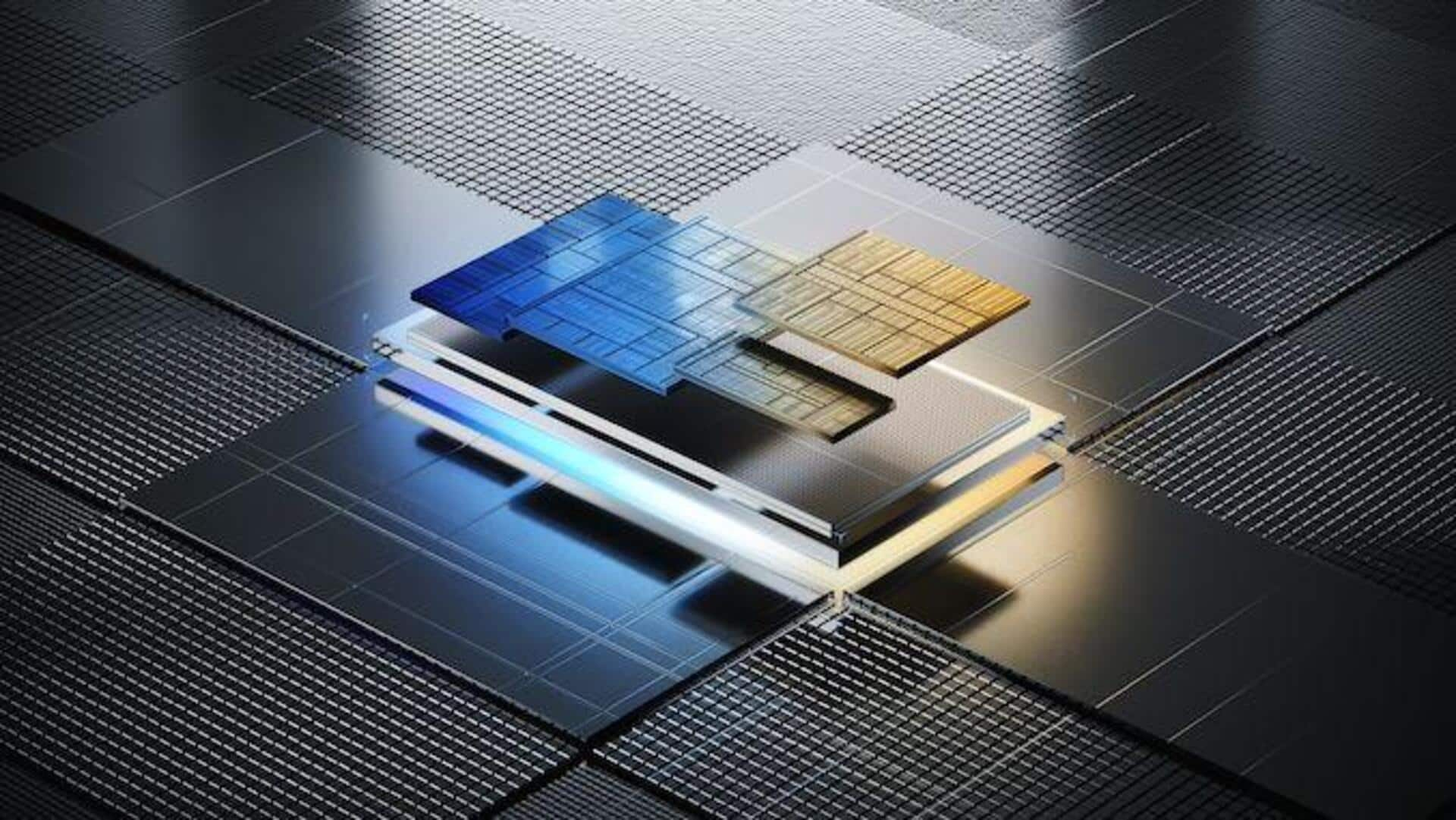
How Intel's new AI-focused PC chips compare with Apple M3
What's the story
Intel is embarking on a new competition in the emerging 'AI PC' segment with its latest Core Ultra Meteor Lake processors. Designed for ultra-thin laptops, these processors pack a CPU, GPU, and a neural processing unit (NPU) that can handle AI tasks. The initial lineup of chips under the Core Ultra lineup is anticipated to power over 230 laptop models from various brands. Here's how the Intel Core Ultra chipsets stack up against Apple's M3 series.
Details
Core Ultra v/s Apple M3: Manufacturing process
The Core Ultra chips are crafted using the Intel 4 (7nm) process and incorporate FOVEROS 3D packaging, making them "the most efficient x86 processor for ultra-thin systems." They pack improved P (Performance) and E (Efficiency) cores and Intel Arc graphics, making them twice as fast as their predecessors. Contrarily, Apple M3, M3 Pro, and M3 Max are industry-first 3nm chips for a personal computer, with next-generation GPU architecture, industry-leading performance, and a faster CPU and Neural Engine.
Insides
Performance core count is higher in Apple M3 Max
Intel Core Ultra series consists of high-performing processors like Ultra 9 185H (coming in Q1 2024). This top-tier processor in the lineup gets up to 16 cores (six performance cores, eight efficiency cores and two low-power efficiency cores). In contrast, the top-of-the-line Apple M3 Max offers a 14 or 16-core CPU, featuring 12 performance cores and four efficiency cores.
Specs
M3 series provides more expandable RAM
The Intel Core Ultra supports up to 64GB of LPDDR5/LPDDR5X RAM or up to 96GB of DDR5 RAM. However, Apple M3 Max provides up to 128GB of unified memory. Thunderbolt 4 connectivity for speeds of 40Gbps applies to both. While Apple M3 Max supports Wi-Fi 6E standards, Intel chips can handle discrete Intel Wi-Fi 7 connectivity.
Insights
Intel has put NPU inside PC chips for first time
The introduction of the Core Ultra series signifies Intel's inaugural inclusion of an NPU within a PC chip. This move aligns with similar strategies employed by Apple, and others like Qualcomm and AMD. All of these brands offer processors featuring an NPU specifically designed for AI and machine learning tasks. Intel views the CPU, GPU, and NPU as mutually reinforcing accelerators for AI workloads, each catering to distinct requirements.
Scenario
NPU accelerates AI workloads with low power consumption
While CPU and GPU are deemed optimal for a range of tasks, NPU is dedicated to accelerating artificial intelligence (AI) workloads efficiently and with low power consumption. It plays a vital role in offloading specific AI tasks from the CPU and GPU, contributing to enhanced system performance and a smoother user experience in applications that leverage AI features. The NPU's specialized design makes it a valuable component for laptops, particularly as AI becomes increasingly integrated into various software applications.